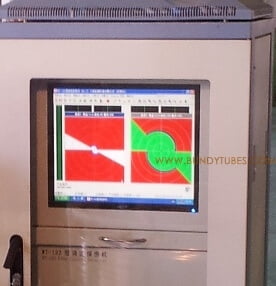Bundy tubes are fully monitored during the tube fabrication, and also gone through a series of inspections to make sure they are safe and reliable for hydraulic uses.
Test and inspection items specified in standards of different countries are generally the same or very similar. We manufacture the tubes and issue test reports as per Chinese standard if no other particular requirement comes from buyers.

One thing to note is that the material listed in those standards are slightly different among countries. Low carbon steel is required commonly, but the chemical composition of the material varies, especially for carbon. In most of these countries, the steel grade exists already in their steel industry. In China, there is equivalent steel grades, but we specially developed a steel grade, BHG2, that is much more suitable for the double wall brazed steel tubing manufacture, perfect mechanical properties for the tube forming and also for the final tubes.
Online Real-time Monitoring
When tube is formed and brazed in the continuous production line, instant Eddy current automatic inspection system keeps detecting any potential imperfections of inner structure of the tube. Once the imperfections are detected, they will be automatically shown and notified by the system:
- An alarm sound is triggered and broadcast by a loud speaker.
- A flashing alert light on the machine shall be turned on.
- An automatic online printer shall mark the tube sections with imperfections with ink, then the imperfect tube sections shall be cut and removed.
Mechanical Preformace Tests
The following tests shall be done to make sure the tubes are suitable for hydraulic applications of automobiles.
- Tensile test.
- Hardness test.
- Bending test.
- Expansion test.
- Developing test.
- Flattening and bending test.
- Pressure-proof test.
- Burst pressure test.



Surface Coating Tests
The following tests shall be conducted to determine how the surface coating/plating performs when protecting the tube from corrosion.
- Coating/plating thickness test.
- Corrosion resistance test (neutral salt spray, i.e. NSS).
- Film performance test (varies according to coating/plating types).



